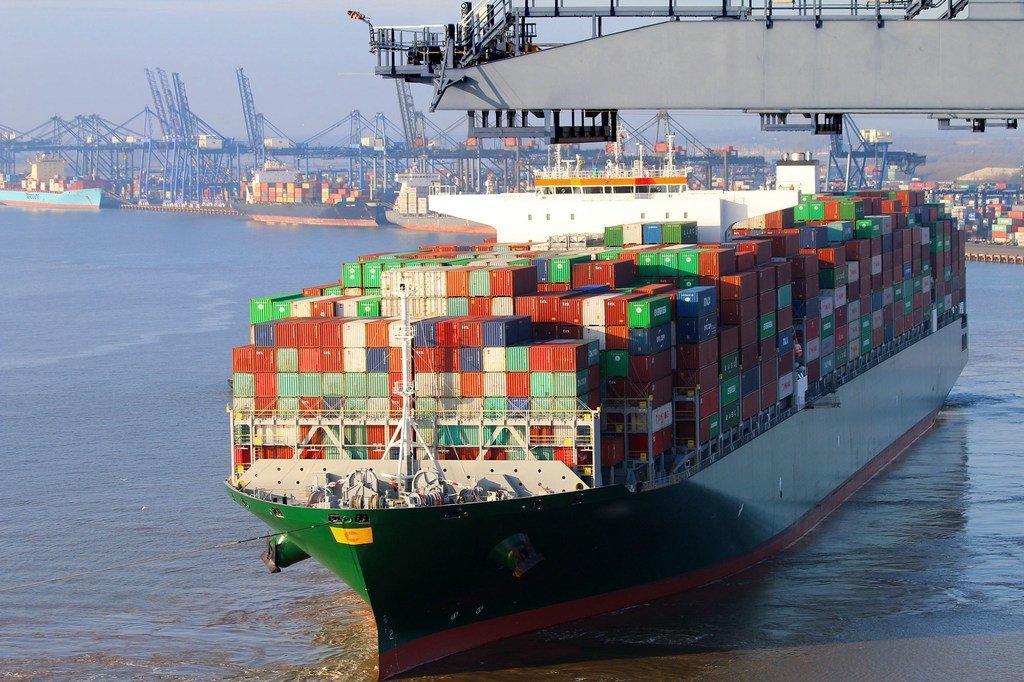The field of maritime navigation faces significant exposure to various threats due to its lack of geographical boundaries or affiliations with specific entities or countries. In recent decades, there has been a notable increase in military threats aimed at disrupting safe navigation, primarily by Russia, Iran, and China. These threats share common motives, including exerting pressure on global trade and the economy, challenging sanctions by restricting maritime freedom, and promoting alternative routes for traditional maritime trade. This has serious implications for all countries worldwide that depend on the uninterrupted flow of food and energy resources.
In recent times, there have been numerous military operations targeting international maritime navigation. These operations have occurred at short intervals and in geographically distant areas, indicating a deliberate focus on this crucial sector. This focus becomes especially apparent when we consider the concentration of these activities in specific straits and maritime regions that handle a significant portion of global trade. This trend is exemplified by the following:
Deliberate Targeting
- The Strait of Hormuz: In recent times, Iranian activities targeting ships passing through the Strait of Hormuz have escalated, including detentions and even firing upon vessels. In response, on August 7, 2023, the United States bolstered its military presence in the region. Notably, warnings regarding navigation in this area have emerged, such as the advisory issued by the British Maritime Security Agency on August 12, underlining the growing threat in the vicinity of the strait.
- The Black Sea: On July 17, 2023, following Russia’s announcement of the suspension of the Black Sea Grain Agreement, Moscow initiated seven drone attacks and missile strikes on Ukrainian ports within a month (according to Ukrainian President Volodymyr Zelenskyy). In retaliation, Kyiv attempted to target ships from the Black Sea Fleet, responsible for controlling navigation in the southwestern part of the sea. Russian naval forces also detained ships bound for Ukrainian ports for inspection. Notably, on July 19 of the same year, the Russian Ministry of Defense declared that all ships sailing in the Black Sea en route to Ukrainian ports would be considered as carrying weapons and military equipment for Kyiv.
- Taiwan Strait: China has significantly increased its military maneuvers and exercises in the Taiwan Strait and its surrounding areas over the past few months, amidst rising tensions with Taiwan. The most recent of these exercises occurred on August 19, 2023. On August 20, the Taiwanese Ministry of Defense reported that 27 Chinese Air Force fighter jets had crossed the median line of the Taiwan Strait (refer to Figure 1).
Motives Behind the Threats
In recent times, the military threats to maritime navigation have been executed by various countries, each with its own set of objectives. However, despite these differences, there are common patterns and dimensions that deserve attention. Some of the most significant of these are outlined below:
- Exerting Pressure through Threats to the Global Economy: The current fragile state of the global economy amplifies the sensitivity and impact of any threats to international trade conducted via sea routes. It is evident that Iran, Russia, and China exploit their influence on the global economy by possessing the capability to disrupt maritime navigation and international trade. This disruption can have severe repercussions, particularly in terms of essential supplies critical to the global economy, such as oil and food. For instance, between 20% and 30% of global oil consumption passes through the Strait of Hormuz, and approximately 21% of global trade traverses the Taiwan Strait (as reported by Maritime Executive in September 2022). Furthermore, the Black Sea Grain Agreement facilitated the export of over 32 million tons of food commodities from three Ukrainian ports on the Black Sea to 45 countries within a year (refer to Figure 2).
Military threats that pose risks to maritime navigation have adverse effects on the transportation cost of goods. This is primarily attributed to the increased expenses related to insurance in high-risk areas, prolonged waiting times during periods of tension, and, in certain instances, the potential suspension of passage in specific areas. For instance, when the Chinese Maritime Safety Administration announced the restriction of passage in the East China Sea near Taiwan from August 12 to 14, 2023, for military exercises, it underscored the capacity to influence global trade routes.
My firsthand experiences with two incidents further emphasize the significance of maritime navigation’s impact on international trade and the economies of many countries. The grounding of the “Ever Given” ship in the Suez Canal in March 2021 and Turkey’s delay of Russian oil transit through the Turkish Bosporus Strait toward the Mediterranean in February 2022, resulting in congestion, vividly illustrated the critical role of maritime navigation during those periods.
- Challenging Sanctions by Undermining Maritime Freedom: The maritime transport sector, like any other industry, possesses several vulnerabilities that can be exploited for illicit activities. Certain countries, including China, Iran, and Russia, employ various methods to obscure the movements of their ships and evade imposed sanctions. These methods encompass manipulation of the ship’s Global Positioning System (GPS) tracking system, transferring cargo from one vessel to another to obfuscate the final destination, establishing companies outside their home country for registration purposes, and falsifying shipping documents and the ship’s flag of operation. Nevertheless, these tactics are coming under increased scrutiny, resulting in stricter export restrictions for some nations, most notably Iran, which has curtailed its freedom of movement within the maritime transport sector.
In response to these developments, it appears that Iran and Russia are targeting maritime freedom as a retaliatory measure against the sanctions levied against them. This exerts a detrimental impact on the entire maritime shipping sector and, by extension, global trade, especially within supply chains that have faced numerous disruptions since the onset of the COVID-19 pandemic. Consequently, the actions taken by these three countries may be aimed at pressuring Western nations to ease their sanctions, particularly because the repercussions are immediate and direct for the nations imposing sanctions, irrespective of their global region. Threats to maritime transportation of specific goods and raw materials have emerged as a novel political and economic leverage tactic, given their adverse consequences on the economies of numerous importing countries.
- Promoting Alternative Trade Routes to Traditional Passageways: Russia, Iran, and China’s disruption of maritime navigation in their respective regions reflects their intent to encourage alternative trade routes to the existing ones. This is achieved through the following means:
- Russia: The disruption of maritime navigation in the Black Sea highlights alternative routes, with the most significant being the “North-South International Transport Corridor,” currently in development (refer to Figure 3). This corridor originates from Russia, traverses the South Caucasus, passes through Iran, and ultimately reaches India. Multiple countries participate in this corridor, including Turkey, Oman, Syria, and select Central Asian nations. This corridor circumvents the Black Sea in favor of overland and maritime routes utilizing the Caspian Sea, extending into the Western Asian region.
- China: Beijing actively seeks to establish east-west connectivity through its “Belt and Road Initiative.” This initiative aims to reduce both travel time and costs compared to traditional maritime routes. It’s noteworthy that the strategic dimensions of this plan favor China in the coming decades, particularly as it enhances connections with numerous countries, thereby boosting trade volumes. This is demonstrated in the following figure.
- Iran: Iran’s interests align with both Russia and China in the pursuit of alternative trade routes, especially since it plays a pivotal role in these corridors. It serves as a significant transit hub for countries in the Arabian Gulf via maritime routes and for other Western Asian nations through overland routes via Iraq and Syria, ultimately reaching Turkey and Europe by land and sea. This positions Iran as an essential participant in the flow of global trade between the targeted regions. It’s important to note that Iran has several connectivity initiatives in the east, such as the “Five Nations Railway Project,” as well as proposed routes for connectivity with Europe, including passage through Iraq and Syria via a land route or the “Tehran-Mediterranean” railway. From there, goods can be transported by sea to European countries bordering the Mediterranean.
The importance of these corridors is on the rise, primarily due to congestion in various maritime routes stemming from increasing threats, not limited to military ones but spanning a broader spectrum. Recently, certain specialized organizations have classified the Black Sea area off the Ukrainian coast as a high-risk navigation region (refer to Figure 5), making it one of the three high-risk regions globally. Consequently, international shipping companies are now contemplating alternative routes to circumvent these threats. Similarly, the deteriorating security situation in the Arabian Gulf, particularly towards the Strait of Hormuz, may lead to the region’s inclusion in the classification of high-risk areas in the foreseeable future.
Complex Risks
In conclusion, the actions of countries situated along critical maritime routes, as they demonstrate their influence on global trade and employ military force to underscore this influence, give rise to multiple risks that pose threats to both regional and global security. What is particularly concerning is that these repercussions now extend beyond economic dimensions to encompass humanitarian aspects. Therefore, it becomes imperative to rise above political disputes and address these threats to human security.
It is crucial to emphasize that the current areas of tension are closely intertwined with food security and energy security. This underscores the necessity for a fresh approach to ensuring the safety of maritime navigation, even in the midst of escalating conflicts among nations.


